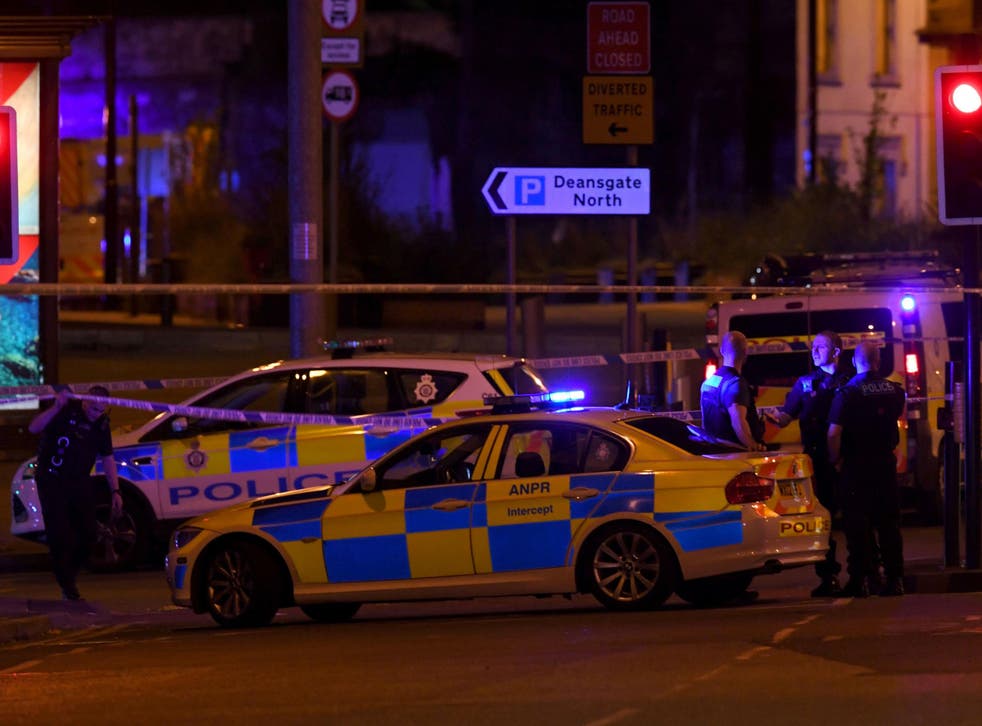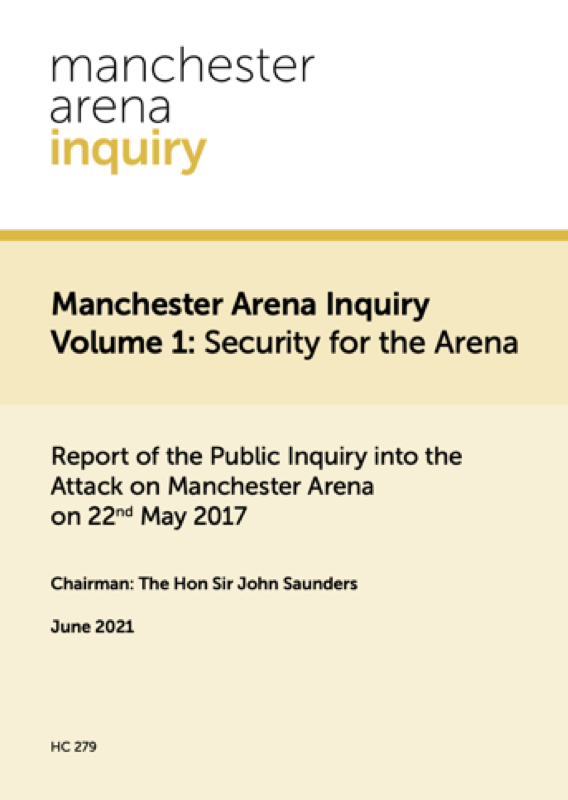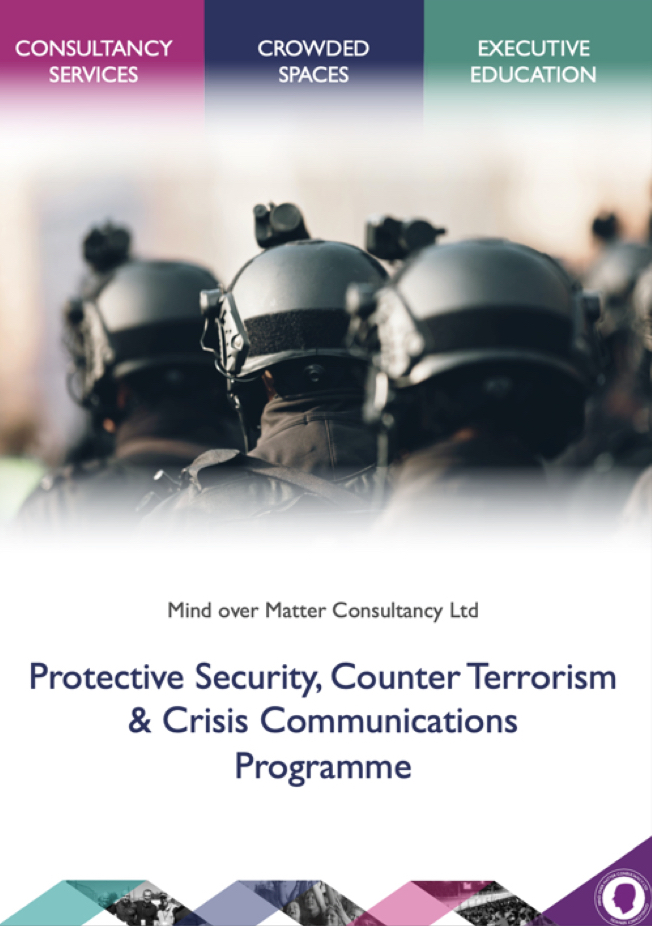About the author: Pete Dalton MSyl is a UK based international major events and protective security consultant. As a former specialist UK Police Senior Office, he was the Head of Department responsible for Protective Security. He maintained a range of specialist command accreditations and managed, planned and commanded major operations and events throughout his service. Pete is now engaged in a diverse range of projects supporting major international sporting and crowded space events, including delivering the Interpol International Safety & Security Training Programme to police commanders from 60 countries.
On January 10th, 2022, the UK Home Secretary Priti Patel provided an update on the Protect Duty Consultation and findings, consisting of 2,755 responders from the security and events industry. The document provides key updates into the provisions of the forthcoming ‘Protect Duty’. This has significant implications for the planning of events, which I will detail here.
What is the Protect Duty?
The Protect Duty is forthcoming UK Legislation that will place legal responsibilities on specified event organisers and venues to consider, develop and implement Counter Terrorism Measures.
It results from the Manchester Arena Attack in May 2017, also referred to as Martyn’s Law, it originates from tireless campaigning by Figen Murray, the mother of one of the victims (Martyn Hett).
The Protect Duty Originates from the 2017 Manchester Arena Attack
The groundwork for this new legal provision originates from the Manchester Arena attack in May 2017. Tireless campaigning by Figen Murray, the mother of Martyn Hett, one of the victims and support from within UK Counter Terrorism Policing and the National Counter Terrorism Security Office has led the way in shaping the strategic requirements that will contribute to increasing security at events.
There has been significant media coverage of the attack and the ongoing public inquiry, which provides comprehensive commentary and background to the case. It’s important to remember the 22 victims who lost their lives whilst attending a music concert on a late spring evening in Manchester. Many more were seriously injured because of the attack.

It is also important to state that the responsibility for the attack rests with Salman Abedi, the threat actor (terrorist) who detonated a suicide borne improvised explosive device in the foyer during the egress phase of the event.
Security at Events Requires a Coordinated, Integrated and Interoperable Response
The threat to events remains real and enduring. The current UK threat level is ‘severe’, the second highest level. Since 2017, 31 terrorist plots have been disrupted. Counter Terrorism Policing and the UK Intelligence Community work tirelessly to identify, analyse, evaluate and mitigate around 800 Counter Terrorism investigations at any one time.
However, security at events and within Publicly Accessible Locations (PALs) requires a coordinated, integrated and interoperable response.
Equally, the approach of minimising, managing and mitigating threats requires a focus on ‘safety, security and service’ in equal measure. Prioritising on one element in isolation can have a negative impact upon successful event management.
The recent Volume 1 report coordinated by the Hon. Sir John Saunders is a key reference document for all involved in the planning, management and command of events. It identifies key findings and recommendations and provides critical insight into missed opportunities, perceived complacency, threat assessment processes, procedures, training, supervision and the response to the attack. Further volumes relating to the Emergency Services response and the role of the UK Intelligence Services will follow.
Implications for the Events Industry
The prevailing threats to international events has led to significant challenges to events and organisers. Other strategic impact factors such as the COVID-19 pandemic, ongoing threats and hazards create a volatile, uncertain and complex environment, particularly where crowd management challenges are also present.
The Protect Duty is likely to place the following legal responsibilities for venues and organisers:
- A requirement to consult internally and externally in managing events
- The need to conduct threat assessments for each event
- A training requirement to develop CT awareness in key staff
- The need to develop a Counter Terrorism & Protective Security plan and contingencies
- The requirement to quality assure and review such plans
The specifics and detail will follow in due course.
The Public Inquiry and a raft of other freely available event guidance, covers the need for an integrated response and agreed roles and responsibilities, not only within the venue or Publicly Accessible Location but through a wider area often referred to as Zone-Ex, The Last Mile or Grey Space. Protective Security Management (PSeM) from the UK’s lead agency, the Centre for Protection of National Infrastructure advocates a focus on physical, personnel and cyber security measures, achieved through a combination of people, processes and technology.
Further, a Protective Security Concept of Operations should be developed with a layered approach to enable ‘strength and depth’ with the strategic intent of deterring, detecting, delaying, mitigating and responding to threat activity. These principles are reflected in freely available information around the world. Security professionals are well versed in these principles.
Actions Event Organisers Can Take
1. Event organisers and venues should appoint a nominated senior security lead, providing training to develop their operational and occupational competence. Protective Security should be a deliberate and positive culture, featuring as a strategic management objective with key deliverables and actions.
A systematic approach would include engaging with freely available advice from a Counter Terrorism Security Advisor (CTSA) for ongoing security advice or a Counter Terrorism Security Coordinator (CT SecCo) for significant events. Both are available from the host Police Service.
Security consultants and professionals also provide a valuable service, the recent threat environment has led to a growth in the requirement for such services.
2. Building upon the engagement, an ongoing and dynamic threat assessment should be developed. This should seek to identify reasonable worst case scenarios for each event, informed by the prevailing threat environment. There are a range of excellent sources in addition to ‘information & intelligence’ that may be shared by the Police Service which can be used to develop such a document.
It should always be noted though that ‘an absence of intelligence does not mean an absence of threat.’ Proportionality, flexibility and scalability should feature as part of this process. A holistic and ‘all hazards approach’ to subsequent risk management should be adopted.
3. A comprehensive process also includes conducting a specific vulnerability assessment at key locations factoring in the most likely attack methodologies. Currently, within the UK these include edged weapons, fake, placed or suicide borne IEDs, vehicle as a weapon attacks, firearms or combinations. Other emerging or novel threats may always be presented.
Reviewing recent attacks, professional research and following media commentary provides valuable professional insight into this area. Seeking competent advice should always be a priority when considering security measures. Membership of a relevant body such as the Security Institute will support in CPD and networking.
4. The requirement to train staff is essential. This should be underpinned by a training needs analysis based against the roles and responsibilities of staff members. An investment in training and CPD must be linked to the transfer of learning into operational practice, this link is often not considered, leading to inefficiency in training, lack of skills transfer and security vulnerabilities.
The UK Counter Terrorism and intelligence Community are committed to working with the industry to develop and deliver freely available information and training, much of which can be accessed on-line. This forms an excellent starting point for general training. It is recommended that the training needs analysis prioritises training and considers a graduated level of enhanced operational and academic development for supervisors and managers.
There are a number of reputable training providers available, some consultancies provide a complete CT & Protective Security service.
5. In developing CT and Protective Security plans, it is key to take an integrated response to safety, security and service. Spectators and staff not only have to be safe but feel safe. Proportionate, scalable and flexible measures are important. The Protective Security measures for an International Stadium or Venue would be different to those required at a smaller venue. Reviewing and augmenting existing measures is a useful starting point. Considering measures in an interdisciplinary and integrated approach is important, particularly where impact upon crowd flows can result. This often presents as an issue in amending or managing access control, screening & searching.
6. Measures should be developed with consideration to spatial and temporal factors, linked to the ‘event flow’ and ‘spectator journey’. Integrated planning systems such as OnePlan can support collaborative planning and the management of events. The development of an effective security plan can be underpinned by the following strategic considerations:
- National & Event threat assessment
- Security by design in built features and temporary overlay
- Security Operations Integration
7. Testing & Reviewing should take place for all stages of event delivery. The development of CT & Protective security plans should be a virtuous cycle across all stages through planning, delivery and review. It is recommended that venues consider the development and adoption of:
- A security policy & culture
- A competent event management / incident response structure
- An operational handbook & contingencies for each venue
- A specific event management plan for every deployment
It is important that event management plans and contingencies coordinate with emergency plans. Within the UK, emergency services operate using the Joint Emergency Services Interoperability Principles (JESIP). These should be planned and tested together with a focus on the key principles. Training aids, APPS and guidance are available on the JESIP website.
A strategic approach to quality assurance and testing using a range of formats is important.
This is an ongoing process, in common with training the need to record, review and track key learning and transfer into operational delivery is critical.
A Positive Step in Delivering Safe Events at Publicly Accessible Locations
In summary, key legal responsibilities through the Protect Duty are moving forwards. This is a positive step in delivering safe events across our Publicly Accessible Locations. Venues should start to consider Counter Terrorism & Protective Security and integrate both into their policies, strategies, plans and procedures.
If you would like further information on this article or would like to consider the specialist consultancy services available, please contact Pete Dalton or Prof Chris Kemp at Mind over Matter Consultancy.
OnePlan can support in providing a complete system to support collaborative planning and event management.















